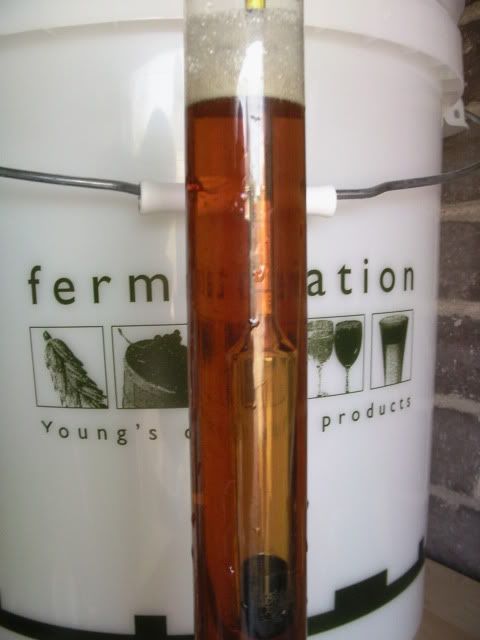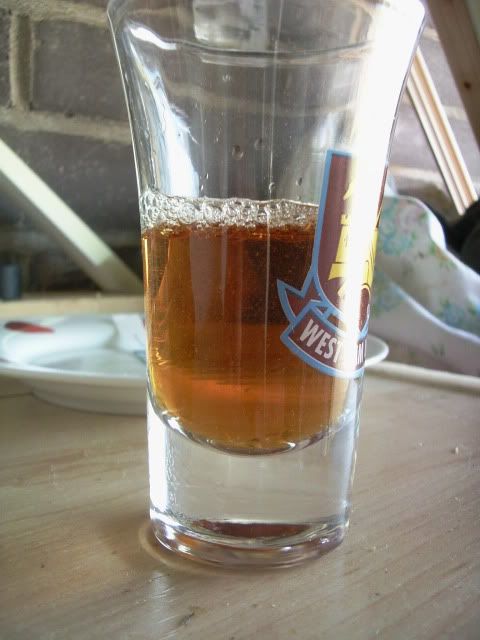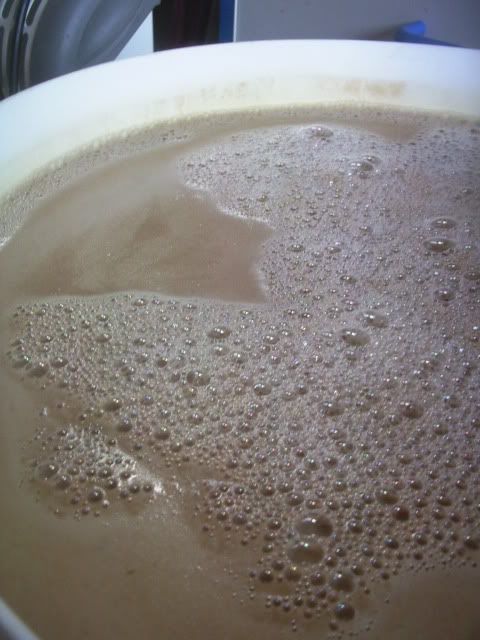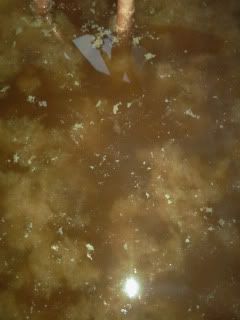The boil is an important process for several reasons.
- It sterilises the wort ready for fermentation.
- It drives off some nasties including sulphides which can effect the end flavour - it is important to perform the boil without the lid on the boiler for this reason so that these nasties are evaporated off during the boil and don't condense back into the wort.
- It causes the hot break - which starts when the wort comes to the boil and foams up and continues for up to 60 mins of a rolling boil. The hot break is the process of proteins being broken out of the solution and clumping together until they fall to the bottom of the pot.
- A continued boil of 60 mins or more is required to stabilise the wort.
- Finally the boil is used to extract the flavour and aroma from the hops. Hops provide bitterness, flavour and aroma depending on the hop schedule. More bitterness is added to the wort, the longer the hops are boiled. More flavour and aroma are added when the hops are added late on in the boil.
As you will see bad things can happen during the initial part of the boil if you're not a bit careful - never walk away from the boiler until the initial hot break has occurred!
So, my last post left us with a boiler full of wort that had been run off in 2 batches from the mash tun.
When the boiler is getting up to temparature a head of foam will start to build on the top of the wort. As the wort comes to a boil and the surface tension is broken the foam will start to rapidly rise. You need to be around to cope with this as you don't want it to boil over - apart from anything else liquids and electricity don't mix particularly well! Also a boil over makes a right mess of the boiler which needs cleaning off.
This is the first time I had done any water treatment and because the Ph was closer to the optimal range I was taken by surprise and had a small boil over. It is possible to attempt to control this by either switching the boiler off for a while as it comes to the boil (not my prefferred option), or spraying cold water over the top of the wort.
I usually let the wort stay at a rolling boil for a good 5 minutes so I know it's going to maintain it when I make hop additions at the scheduled times - it's important to keep a good rolling boil for atleast 60 mins to help to stabilise the dropping out of protein clumps.
Once I add the first bittering hops I reset my timer to 90 mins. This recipe also calls for hop additions at 20mins, and 10 mins from the end of the boil for flavour and again at flame out.
I also add copper finings (Protofloc, Irish Moss, or Whirlfloc) - in this case Protofloc granules - to the boil at 10 mins to the end of the boil. Protofloc is a concentrated version of Irish Moss, which is a type of seaweed dried and ground into granules. Copper finings are used to help the stabilisation process to ensure the removal of all (or atleast most) of the haze forming proteins from the final beer.
The immersion cooler also goes into the boiler at about the 10 min from end mark in order to sterilise it.
This is an important milestone too. Anything post boil to touch the wort MUST be sterilised!
Once the 90 mins is up, the boiler is switched off and the wort is brought down to 80oC and the post boil hops are added. These are left for 15-30 mins before turning the immersion chiller on to bring the wort down to pitching temperature as quickly as possible. Cooling the wort quickly (within 40 mins or so) is important as it provides the cold break. The cold break helps the proteins that were formed in the hot break to clump together in large clumps. It can look rather strange!
Once the wort is down to temparture, the IC is turned off and removed and the boiler is left to allow the wort to settle and the cold break material to settle out onto the hop bed.
At this point it is helpful to draw off some wort a litre or so at a time and recirulate into the top of the boiler until the wort runs clear. This is similar process to the recirculating in the mash tun but this time the wort is being filtered by the hop bed.
 Once running clear a sample is taken in the trial jar to test the Specific Gravity with the hydrometer. This time the wort is the clearest I have seen it. I put this down to careful following of a good process and also the treatment of the water to get a good mash and boil, leading to the break material dropping out of suspension.
Once running clear a sample is taken in the trial jar to test the Specific Gravity with the hydrometer. This time the wort is the clearest I have seen it. I put this down to careful following of a good process and also the treatment of the water to get a good mash and boil, leading to the break material dropping out of suspension.I also like to draw a small sample off for human testing - just to get an idea of the taste. It'll be very sweet and quite bitter (hopefully). It is all part of the understanding process though so I find it helpful to try a small sample at all stages of the brewing process.

Next time we'll move onto Post Boil And Fermentation.
Happy Days!






.png)



Excellent blog, the reasoning behind the 60min + boil from a Microbiological perspective is to do with endospores I believe. Basically they are survival cells produced within certain bacteria and they can survive pretty much anything - including heigh levels of radiation. They are known to survive even 40minutes of boiling so an hour is about 99% effective at denaturing and killing them. It certainly kills everything else during this time so we can have a nice safe tasty beer :) Matt www.BrewJaM.co.uk
ReplyDelete